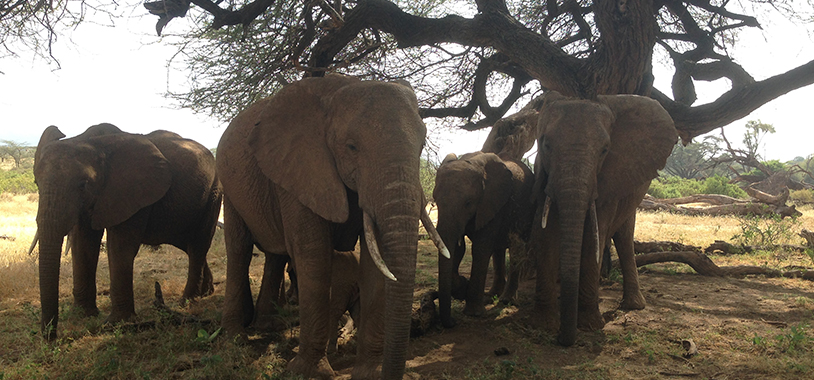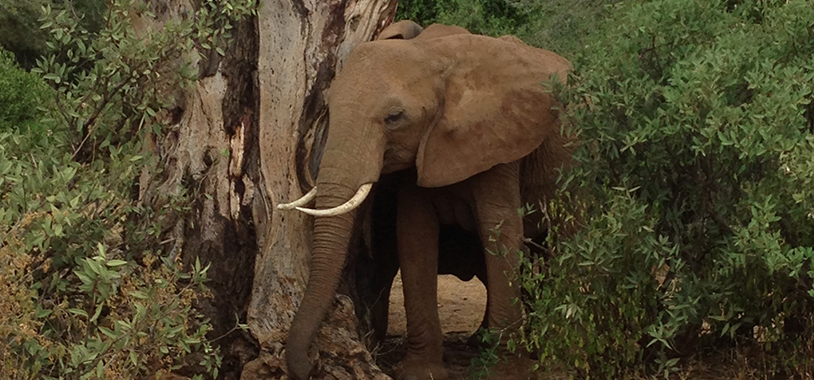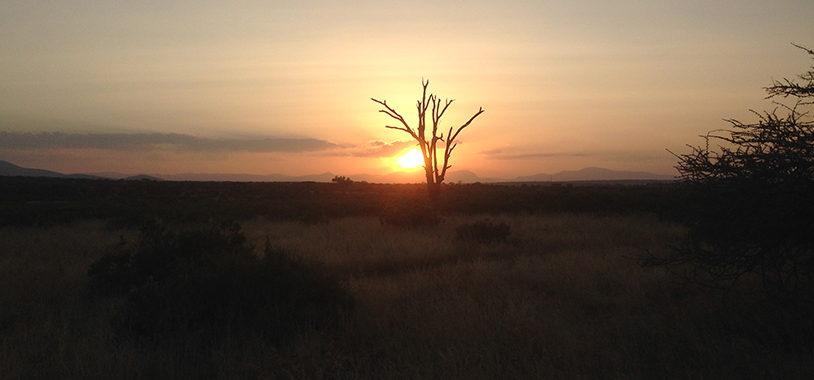With my time at Save the Elephants drawing to a close, I can only thank everyone who has made my experience better than I could ever have possibly imagined. It has been a privilege to work amongst such dedicated people and to witness the efforts on the front line of the fight to save these remarkable animals. To that end I would like to say a few words about my experience in Samburu.
During the course of my stay I have had the great pleasure of going out in our research vehicles almost every day for a few hours in order to record the movements, behaviour and individual codes of each elephant family we saw. This data adds to the extensive Long Term Monitoring system (LTM), an invaluable source of information on the local elephant population at the time. In order to identify each individual, the team uses the shape of the ears and tusks as primary sources. I have come to realise that getting to know the elephants in such an intimate way is what makes STE stand out, the quality of research here in all aspects is second to none.
Furthermore, I have been struck by the power of elephants and what they are able to achieve. Firstly, the distances elephants cover through their vast network of ‘corridors’, as shown by the collared elephants tracking data, and secondly the part they play in their environment. Elephants are vital to the savannah ecosystem in a number of ways: the dispersal of seeds and organic matter in their dung, which also contributes to the top soil layer; providing a source of nourishment for other animals when they dig up the earth; and maintaining the savannah by felling trees. I would like to dwell on the concept of elephants and trees, for their special relationship is a bittersweet one. When first I saw the base of a tree stripped of its bark I was amazed that elephants were capable of such a thing, even on thin branches. The purpose of this exercise is to obtain the rich nutrients contained within the bark. This poses a dilemma for conservationists; is it best to leave the trees and elephants alone so they can continue to strip and break them in the way they have done for centuries, or is intervention needed to protect what few trees are still left intact? The answer is intervention, to a certain degree.
Accordingly there are now many trees in and around Samburu National Reserve which have a wire mesh around the lower part of the trunk, our non-obtrusive method for protecting the trees. The wire prevents (or at least makes it difficult for) the elephants to obtain the bark, with the aim that they are eventually compelled to seek another tree. It is necessary to protect trees in Samburu for a huge number of reasons. Many animals rely on them to survive, not to mention the sustainability of the ecosystem and the soil depend on them. However, occasionally the wire mesh cannot stand a chance against the might of an elephant’s trunk, and it is ripped off. Although this sometimes occurs, wire mesh is by far the best available way of protecting valuable trees from the destructive force of an unwitting elephant. Hence we can help to sustain the ecological integrity of this environment, one of STE’s key aims.
So what happens when a previously inaccessible place bursting with perfect trees for elephants suddenly becomes available for them? This is what happened with Samburu Serena Lodge, a hotel which was abandoned having been inundated with several enormous floods over a number of years. As a result elephants have been free to roam there since 2010. As the site slowly falls to ruin, the elephants (namely the bulls) have discovered it and begun to exploit its rich flora. But this effect could be detrimental to a micro-environment which has survived for decades without the presence of elephants. This lack of elephants has had the double effect of making the Samburu Serena Lodge area a more attractive location for them to feed, owing to the fact that its nutrients have been left relatively untouched.
With the elephants marking their presence at Serena, one may ask what the future holds for this place. It is inevitable that without any human interaction elephants will eventually turn it into Savannah, resulting in the loss of much of its flora and fauna. Despite this, it would be beneficial for the Savannah animals who would have more space to roam. This is especially important because of Serena Lodge’s location adjacent to the Ewaso Ng’iro river, during droughts it would offer some animals greater opportunity to drink what little water remains. So even though the destruction and degradation of some of the flora and fauna at Serena would signal the end for them, new opportunities arise for other species in its wake. Save the Elephants will be keeping an eye on this place in future to witness what changes occur- and interfere if it is deemed necessary.
29/01/15




